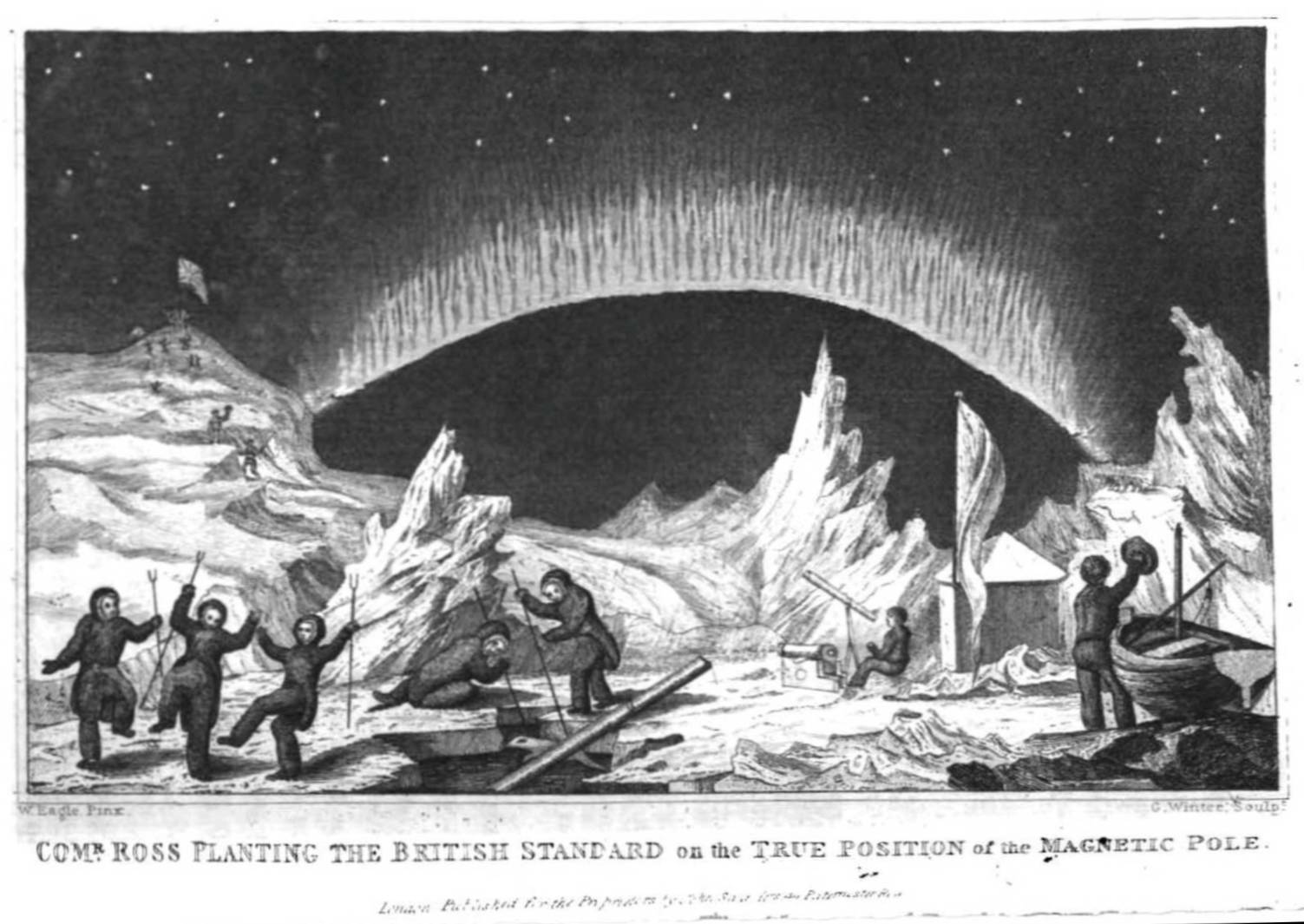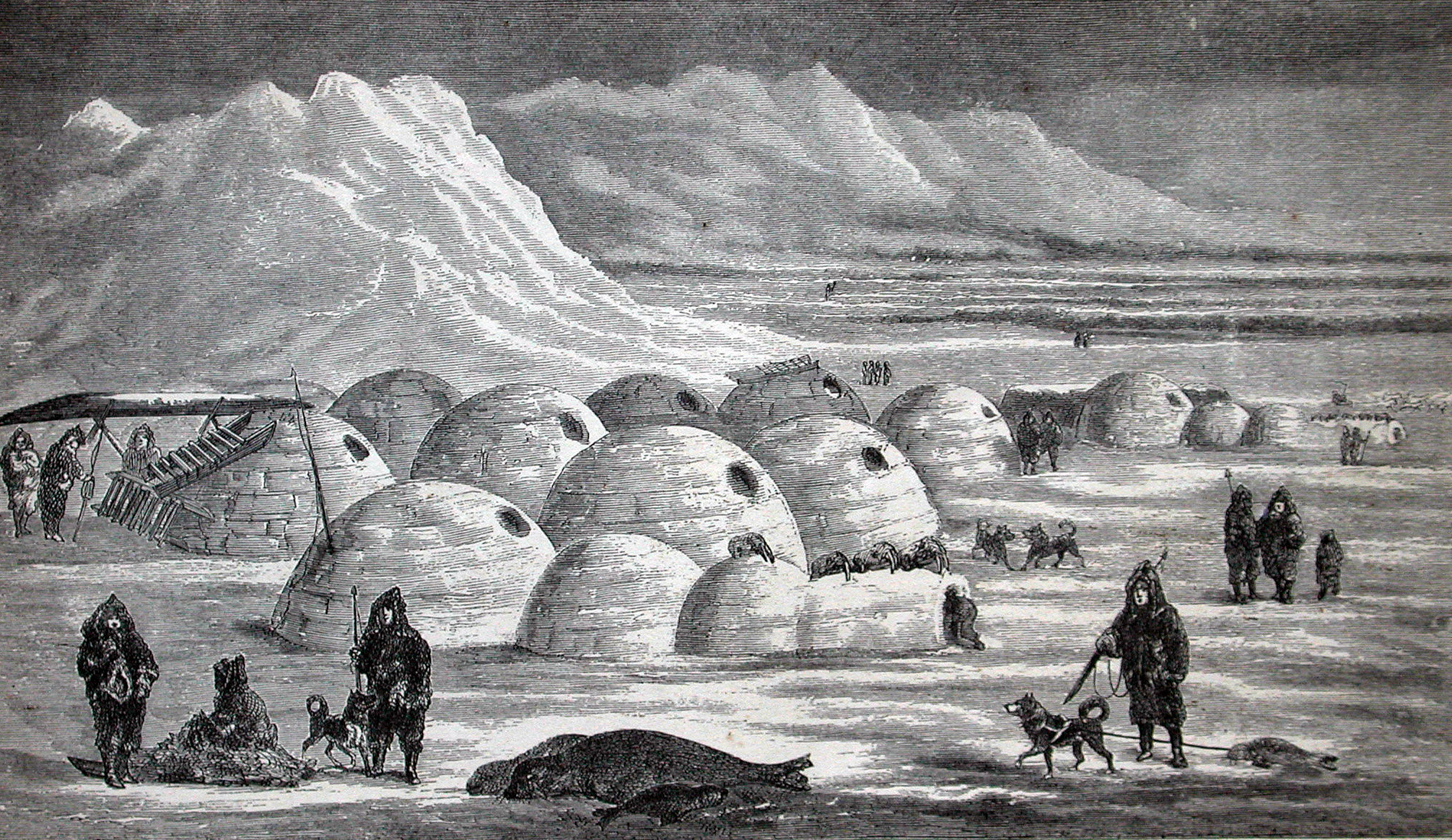|
Boothia Peninsula
Boothia Peninsula (; formerly ''Boothia Felix'', Inuktitut ''Kingngailap Nunanga'') is a large peninsula in Nunavut's northern Canadian Arctic, south of Somerset Island. The northern part, Murchison Promontory, is the northernmost point of mainland Canada. Geography Bellot Strait (Ikirahaq) separates the peninsula from Somerset Island to the north. Babbage Bay is on the east coast, as is Abernethy Bay, just to the south. The community of Taloyoak lies in the far south and is the peninsula's only significant population centre. Paisley Bay is on the west coast, as is Wrottesley Inlet (between Paisley Bay and Bellot Strait). Prior to the detachment of Nunavut in 1999, the Boothia Peninsula and the nearby Melville Peninsula were the only parts of mainland Canada that belonged to the District of Franklin in the then Northwest Territories. The balance of the District of Franklin was all situated within the Arctic Archipelago. Exploration John Ross was forced by ice to s ... [...More Info...] [...Related Items...] OR: [Wikipedia] [Google] [Baidu] |
Boothia And Melville Peninsula 1 , a body of water in Nunavut, Canada
{{Geodis ...
Boothia may refer to: * The Boothia Peninsula, a peninsula in Nunavut, Canada * The Gulf of Boothia The Gulf of Boothia is a body of water in Nunavut, Canada. Administratively it is divided between the Kitikmeot Region, Nunavut, Kitikmeot Region on the west and the Qikiqtaaluk Region on the east. It merges north into Prince Regent Inlet, the ... [...More Info...] [...Related Items...] OR: [Wikipedia] [Google] [Baidu] |
John Ross (Arctic Explorer)
Sir John Ross (24 June 1777 – 30 August 1856) was a Scottish Royal Navy officer and polar explorer. He was the uncle of Sir James Clark Ross, who explored the Arctic with him, and later led expeditions to Antarctica. Biography Early life John Ross was born in Balsarroch, West Galloway, Scotland, on , the son of the Reverend Andrew Ross of Balsarroch, Minister of Inch in Wigtownshire, and Elizabeth Corsane, daughter of Robert Corsane, the Provost of Dumfries. His family home was on the shore of Loch Ryan, at Stranraer. Naval career In 1786, aged nine, Ross joined the Royal Navy as a first-class volunteer and was assigned to . It soon sailed to the Mediterranean Sea, where it remained until 1789. He then served aboard for several months before a transfer to the merchant marine for eight years. In September 1799 he was recalled to the Navy and appointed midshipman on HMS ''Weazel'', which shortly joined in the Anglo-Russian invasion of Holland. Short peri ... [...More Info...] [...Related Items...] OR: [Wikipedia] [Google] [Baidu] |
British Library
The British Library is the national library of the United Kingdom and is one of the largest libraries in the world. It is estimated to contain between 170 and 200 million items from many countries. As a legal deposit library, the British Library receives copies of all books produced in the United Kingdom and Ireland, including a significant proportion of overseas titles distributed in the UK. The Library is a non-departmental public body sponsored by the Department for Digital, Culture, Media and Sport. The British Library is a major research library, with items in many languages and in many formats, both print and digital: books, manuscripts, journals, newspapers, magazines, sound and music recordings, videos, play-scripts, patents, databases, maps, stamps, prints, drawings. The Library's collections include around 14 million books, along with substantial holdings of manuscripts and items dating as far back as 2000 BC. The library maintains a programme for content acquis ... [...More Info...] [...Related Items...] OR: [Wikipedia] [Google] [Baidu] |
Torchwood Publishing
''Torchwood'' is a British Science fiction on television, science fiction television programme created by Russell T Davies. A spin-off of the 2005 revival of ''Doctor Who'', it aired from 2006 to 2011. The show shifted its broadcast channel each series to reflect its growing audience, moving from BBC Three to BBC Two to BBC One, and acquiring American financing in its fourth series when it became a co-production of BBC One and Starz. ''Torchwood'' is aimed at adults and older teenagers, in contrast to ''Doctor Who''s target audience of both adults and children. As well as science fiction, the show explores a number of themes, including existentialism, sexuality and human corruptibility. ''Torchwood'' follows the exploits of a small team of alien-hunters, who make up the Cardiff-based, fictional Torchwood Institute which deals mainly with incidents involving extraterrestrials. Its central character is Captain Jack Harkness (John Barrowman), an immortal con-man from the distant fu ... [...More Info...] [...Related Items...] OR: [Wikipedia] [Google] [Baidu] |
Northwest Passage
The Northwest Passage (NWP) is the sea route between the Atlantic and Pacific oceans through the Arctic Ocean, along the northern coast of North America via waterways through the Canadian Arctic Archipelago. The eastern route along the Arctic coasts of Norway and Siberia is accordingly called the Northeast Passage (NEP). The various islands of the archipelago are separated from one another and from Mainland Canada by a series of Arctic waterways collectively known as the Northwest Passages, Northwestern Passages or the Canadian Internal Waters. For centuries, European explorers, beginning with Christopher Columbus in 1492, sought a navigable passage as a possible trade route to Asia, but were blocked by North, Central, and South America, by ice, or by rough waters (e.g. Tierra del Fuego). An ice-bound northern route was discovered in 1850 by the Irish explorer Robert McClure. Scotsman John Rae explored a more southerly area in 1854 through which Norwegian Roald Amundsen f ... [...More Info...] [...Related Items...] OR: [Wikipedia] [Google] [Baidu] |
Henry Larsen (explorer)
Henry Asbjørn Larsen (September 30, 1899 – October 29, 1964) was a Norwegian-Canadian Arctic explorer. Larsen was born on a small island, Herføl, south of Fredrikstad in Norway. Like his hero, Roald Amundsen, he became a seaman. Larsen immigrated to Canada, and became a British subject in 1927 (Canadian citizen in 1947). In 1928, he joined the Royal Canadian Mounted Police (RCMP). RCMP service In 1928 the RCMP commissioned for Arctic service. During its first voyage into the Arctic, Larsen served as mate under a captain that the RCMP hired, but, once in the Arctic, Larsen was appointed captain. Larsen commanded ''St. Roch'' for most of the next two decades, rising to the rank of sergeant. In the final years of Larsen's career, he was the senior RCMP officer in the Arctic. Following his command of ''St. Roch'', Larsen was promoted to inspector with responsibility for all Arctic detachments. For the first 12 years that the ship was in commission, Larsen and his cr ... [...More Info...] [...Related Items...] OR: [Wikipedia] [Google] [Baidu] |
King William Island
King William Island (french: Île du Roi-Guillaume; previously: King William Land; iu, Qikiqtaq, script=Latn) is an island in the Kitikmeot Region of Nunavut, which is part of the Arctic Archipelago. In area it is between and making it the 61st-largest island in the world and Canada's 15th-largest island. Its population, as of the 2021 census, was 1,349, all of whom live in the island's only community, Gjoa Haven. While searching for the Northwest Passage, a number of polar explorers visited, or spent their winters on, King William Island. Geography The island is separated from the Boothia Peninsula by the James Ross Strait to the northeast, and the Rae Strait to the east. To the west is the Victoria Strait and beyond it Victoria Island. Within the Simpson Strait, to the south of the island, is Todd Island, and beyond it, further to the south, is the Adelaide Peninsula. Queen Maud Gulf lies to the southwest. Some places on the coast are: (counter clockwise from the nort ... [...More Info...] [...Related Items...] OR: [Wikipedia] [Google] [Baidu] |
North Magnetic Pole
The north magnetic pole, also known as the magnetic north pole, is a point on the surface of Earth's Northern Hemisphere at which the Earth's magnetic field, planet's magnetic field points vertically downward (in other words, if a magnetic compass needle is allowed to rotate in three dimensions, it will point straight down). There is only one location where this occurs, near (but distinct from) the geographic north pole. The Geomagnetic pole, geomagnetic north pole is the northern Antipodes, antipodal pole of an ideal dipole model of the Earth's magnetic field, which is the most closely fitting model of Earth's actual magnetic field. The north magnetic pole moves over time according to magnetic changes and flux lobe Elongation (materials science), elongation in the Earth's outer core. In 2001, it was determined by the Geological Survey of Canada to lie west of Ellesmere Island in northern Canada at . It was situated at in 2005. In 2009, while still situated within the Canadian ... [...More Info...] [...Related Items...] OR: [Wikipedia] [Google] [Baidu] |
James Clark Ross
Sir James Clark Ross (15 April 1800 – 3 April 1862) was a British Royal Navy officer and polar explorer known for his explorations of the Arctic, participating in two expeditions led by his uncle John Ross, and four led by William Edward Parry, and, in particular, for his own Antarctic expedition from 1839 to 1843. Biography Early life Ross was born in London, the son of George Ross and nephew of John Ross, under whom he entered the Royal Navy on 5 April 1812. Ross was an active participant in the Napoleonic Wars, being present at an action where HMS ''Briseis'', commanded by his uncle, captured ''Le Petit Poucet'' (a French privateer) on 9 October 1812. Ross then served successively with his uncle on HMS ''Actaeon'' and HMS ''Driver''. Arctic exploration Ross participated in John's unsuccessful first Arctic voyage in search of a Northwest Passage in 1818 aboard ''Isabella''. Between 1819 and 1827 Ross took part in four Arctic expeditions under William Ed ... [...More Info...] [...Related Items...] OR: [Wikipedia] [Google] [Baidu] |
Igloo
An igloo (Inuit languages: , Inuktitut syllabics (plural: )), also known as a snow house or snow hut, is a type of shelter built of suitable snow. Although igloos are often associated with all Inuit, they were traditionally used only by the people of Canada's Central Arctic and the Qaanaaq area of Greenland. Other Inuit tended to use snow to insulate their houses, which were constructed from whalebone and hides. Snow is used because the air pockets trapped in it make it an insulator. On the outside, temperatures may be as low as , but on the inside, the temperature may range from when warmed by body heat alone. Nomenclature The Inuit language word (plural ) can be used for a house or home built of any material, and is not restricted exclusively to snowhouses (called specifically , plural ), but includes traditional tents, sod houses, homes constructed of driftwood and modern buildings. Several dialects throughout the Canadian Arctic (Siglitun, Inuinnaqtun, Natsil ... [...More Info...] [...Related Items...] OR: [Wikipedia] [Google] [Baidu] |
Inuit
Inuit (; iu, ᐃᓄᐃᑦ 'the people', singular: Inuk, , dual: Inuuk, ) are a group of culturally similar indigenous peoples inhabiting the Arctic and subarctic regions of Greenland, Labrador, Quebec, Nunavut, the Northwest Territories, and Alaska. Inuit languages are part of the Eskimo–Aleut languages, also known as Inuit-Yupik-Unangan, and also as Eskaleut. Inuit Sign Language is a critically endangered language isolate used in Nunavut. Inuit live throughout most of Northern Canada in the territory of Nunavut, Nunavik in the northern third of Quebec, Nunatsiavut and NunatuKavut in Labrador, and in various parts of the Northwest Territories, particularly around the Arctic Ocean, in the Inuvialuit Settlement Region. With the exception of NunatuKavut, these areas are known, primarily by Inuit Tapiriit Kanatami, as Inuit Nunangat. In Canada, sections 25 and 35 of the Constitution Act of 1982 classify Inuit as a distinctive group of Aboriginal Canadians wh ... [...More Info...] [...Related Items...] OR: [Wikipedia] [Google] [Baidu] |
Felix Booth
Sir Felix Booth, 1st Baronet, FRS (16 July 1780 Clerkenwell – 24 January 1850 Brighton, Sussex) was a wealthy British gin distiller, and promoter of Arctic exploration, with various places in Nunavut, Canada, being named after him. Life and family Sir Felix Booth's ancestry traces back beyond the 13th century when his family were lords of the manor of Barton, Lancashire. Five generations later, Sir John Booth (1350–1422) wed twice at Eccles parish church where the Booths were patrons of the living, firstly to Joan Trafford (died 1411) and secondly to Maude Savage, collectively producing thirteen children (and two Archbishops of York). Their eldest son Sir Thomas Booth (1395–1482) married Isabel Carrington, in 1431, before settling on family estates in Lincolnshire. The second son, Sir Robert Booth made a particularly advantageous marriage in 1409 to Dulcia Venables, thereby inheriting ''de jure uxoris'' the vast Massey estates in North-West England and whose descen ... [...More Info...] [...Related Items...] OR: [Wikipedia] [Google] [Baidu] |








